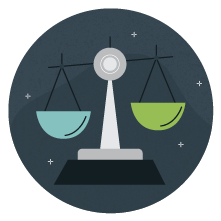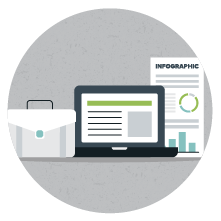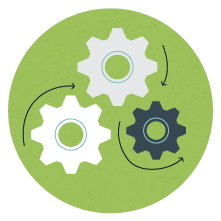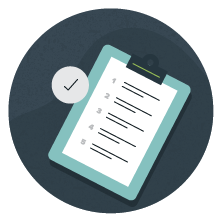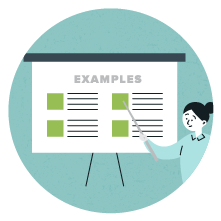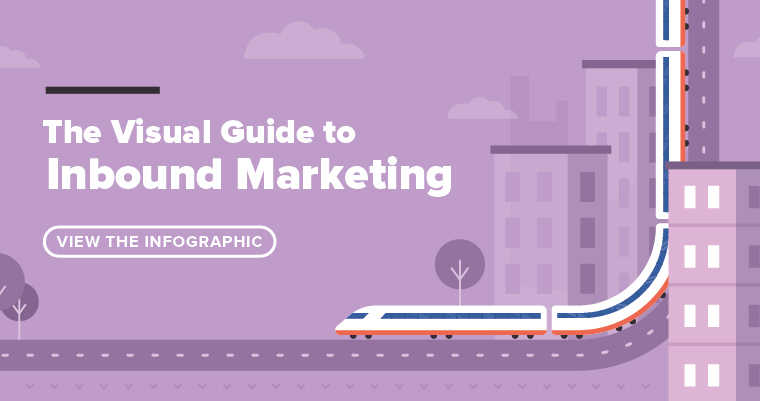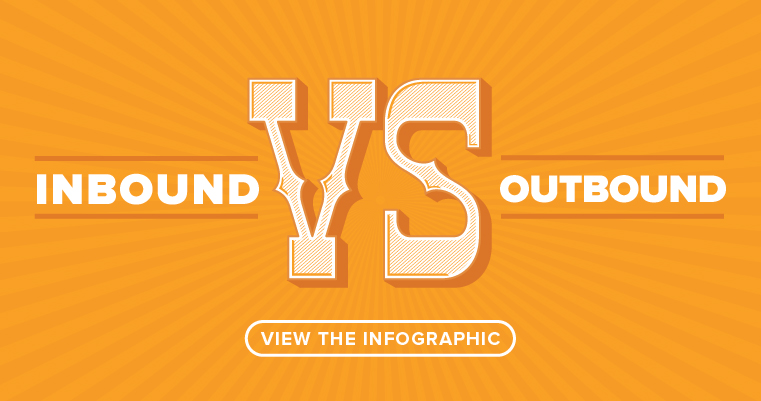What is Inbound Marketing?
Inbound marketing is a process that attracts prospective customers by developing content that provides value, answers questions and creates personalized digital experiences. It’s one of the most effective ways to convert prospects into loyal customers. Where traditional outbound marketing interrupts and disturbs, inbound marketing connects and delights.
Table of Contents
What’s the Difference Between…
The proliferation of digital tools has created many ways for brands to reach their target audiences. Inbound marketing leverages many different technologies to provide solutions and create strong relationships. Take a look at how this methodology compares to other types of marketing:
…Inbound and Outbound Marketing?
Traditional marketing strategies present marketing materials to people who may or may not be interested in the offer. Essentially, outbound tactics like cold calling actively interrupt potential customers to ask if they’re interested in a particular product or service. In this case, the prospects may not be fully aware of the brand and its offerings and they may not be ready to make a purchase decision.
Inbound marketing takes a more customer-friendly approach. Rather than disturbing people in their daily routine, inbound marketing efforts help brands to be found by people who are already interested in learning about them. Through blog posts, landing pages, social media and other inbound strategies, marketers can transform their brands into valuable resources and trusted thought leaders.
…Inbound and Content Marketing?
Inbound marketing is a big-picture concept that encompasses many different activities. Content marketing is one of those activities; it uses content that a target group will find beneficial to establish a relationship based on trust and expertise. So, the two concepts are not exactly the same thing, but they have the same goals because content marketing is a highly effective means of attracting inbound prospects.
…Inbound and Digital Marketing?
If inbound marketing is a broad term that includes many different methods of attracting customers, then digital marketing is an even broader term that involves any marketing using digital technologies.
Therefore, sending cold emails would be a form of digital marketing, but not inbound marketing. However, an email newsletter for which customers proactively sign up would be both digital and inbound marketing.
…Inbound and Online Marketing?
Online marketing, or internet marketing, is a subset of digital marketing. In fact, most forms of digital marketing would be classified as online marketing because they involve communication between brands and customers over the internet. However, some forms of digital marketing do not require a connection to the web. Digital billboards, smartphone apps and SMS communications may use digital technologies, but aren’t necessarily online. In contrast, almost all inbound marketing strategies utilize the internet, but there may be a few exceptions.
Elements of a Successful
Inbound Marketing Strategy
Inbound marketing strategies are highly flexible and easy to scale. Depending on the needs of a brand’s audience, marketers may choose to use a mix of tactics. For instance, B2B marketers often leverage long-form content like case studies and white papers, while B2C marketers are more likely to be active on social media.
Search Engine Optimization (SEO)
This is the process of optimizing a website’s structure and content to rank organically on search engines like Google and Bing. The higher a webpage appears on a search engine results page (SERP), the more likely people are to click on it. In fact, the top three positions on any given SERP get the majority of clicks.
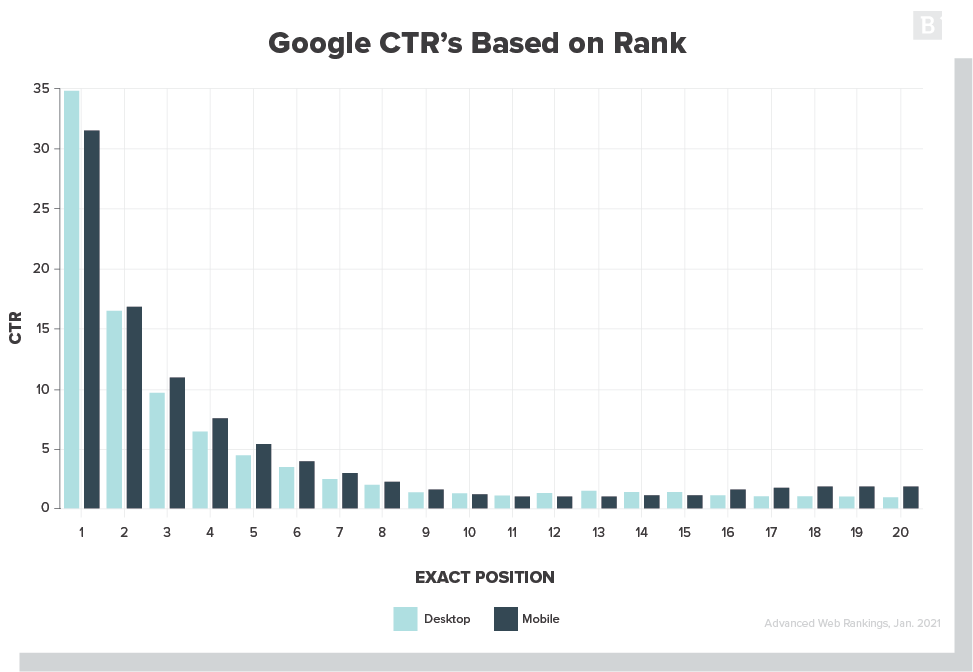
Content Marketing
Content forms the backbone of any effective inbound marketing campaign. Without engaging content, site visitors aren’t likely to spend much time hanging around. Inbound marketers conduct research to discover what their target audience is looking for online. It might be information about an industry, a trend or a particular product or service.
Content marketing is highly valuable to brands because it helps them to rank highly in SERPs. In fact, content that is deemed high quality by Google often becomes a rich snippet – a SERP feature that is enticing to searchers.
Email Marketing
Traditional marketers used physical mail and email to send mass communications to people who might be interested in their offerings. Inbound email marketing takes a different approach. Rather than pushing out emails in the hopes that they will convert prospects, inbound email marketing seeks to draw customers to the brand’s website with valuable content. Often, marketers will use segmented lists to send highly personalized messages to prospects who have expressed interest in a particular offer.
Social Media Marketing
Brands with a strong social media presence forge strong relationships with their customers. A social media page is often the first place prospects connect with brands. Inbound marketers use social channels to distribute content and engage in conversations with customers. Ultimately, the goal is to use social media to attract users to the brand’s website.
Influencer Marketing
Many customers dislike traditional outbound marketing because they don’t want to be sold to. However, consumers have shown a preference for learning about new products from online personalities they trust. A recent survey found that 72% of consumers prefer to interact with micro-level social media influencers – those with fewer than 100,000 followers, compared with celebrity endorsements.
Types of Content To Use in Inbound Marketing
Without strong content, inbound marketing strategies wouldn’t be so effective. Brands that distribute several types of content on various channels can reach their target audience wherever they happen to be online.
Blog Posts
Blogs are one of the most common forms of content marketing because they can be highly valuable resources for customers in search of information. Search-optimized blogs help brands to rank highly in SERPs and capture top-of-funnel traffic. Blogs can address customer pain points and then direct them to other pieces of content that either lead them to make a purchase or contact a sales representative.
Today, blogs and other forms of content should be optimized for mobile devices, because search providers like Google use mobile versions of webpages for ranking. Pages that load fast and offer simple user interfaces are more likely to place highly in SERPs.
Landing Pages
Considering that inbound marketing focuses on drawing customers to your site, it should be no surprise that landing pages are an essential part of an effective inbound strategy. Landing pages should not only be optimized for search engines, but also for the brand’s sales funnel. That means each landing page should serve a specific purpose and it should connect to other relevant pieces of content through strategic linking strategies.
For example, many marketers combine pay-per-click (PPC) ads with optimized landing pages. So, if a PPC ad that appears on a SERP addresses a specific keyword, it should lead to a high-quality landing page that gives the reader more information about that keyword. From there, engaging calls to action can drive site visitors further down the funnel.
Case Studies
Modern customers want proof of an offering’s value before they part with their hard-earned money. B2B customers likewise have an obligation to ensure they spend their budgets wisely and with the least amount of risk. Case studies provide brands with a way to demonstrate the value of their offerings in a tangible way.
People enjoy reading stories, and a good case study is just that: a compelling story. Using quotes and anecdotes from satisfied customers, case studies provide an engaging platform for prospects to learn about brands. Plus, case studies can be a useful type of gated content, for which prospects will exchange their contact information.
Infographics
Whether or not you believe that 65% of people are visual learners, there’s no doubt that graphics can be a highly effective way to get across important information. In fact, users are three times more likely to share infographics than other types of content. Through colorful illustrations and easily digestible copy, infographics provide readers with useful information without taking up too much of their time.
Not all infographics need to be whimsical, either. B2B brands often use infographics to convey data in an engaging manner, without departing from their typical brand tone and voice.
Despite these distinctions, it’s important for B2B marketers to remember that business audiences are also people. While content may appeal to their workplace identities and needs, they still have a sense of humor. Their emotions still play a role in the decision-making process. The most successful B2B content marketers can strike this balance.
Deep Dive

14 Types of Visual Content To Use in Your Content Marketing Strategy [Infographic + SlideShare]
If you want to stand out from the crowd and appeal to more readers, add these visuals to your content marketing strategy.

18 Types of Written Content: The Only Guide You’ll Ever Need (eBook)
Creative content writing is both a science and an art form. Executing on a sophisticated content strategy that includes the written word is not a walk in the park, and many marketers fail to understand how to pivot their approaches to each asset.
Inbound Marketing Processes
Marketers around the world have developed their processes for attracting and converting new customers. Take a look at some of the most popular methods:
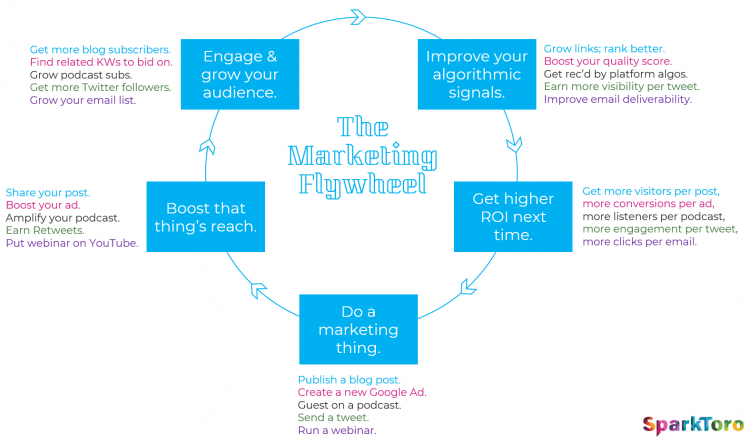
This concept was coined by Rand Fishkin on the Moz blog in 2013. It uses the engineering principle of a flywheel – a revolving device used to store power – as a metaphor for attracting customers. A flywheel requires significant effort to start moving, but once it’s going, it takes less energy to keep moving.
So, how is inbound marketing like a flywheel?
In this model, the first customer engagements are like the first spin of the wheel. It takes a tremendous amount of work to earn the first marketing conversions, but over time, it becomes easier to convert prospects as the marketing effort ramps up. A concrete example would be the creation of a new landing page. It can take up to three months for the page to rank on the first page of Google, but once it does, more and more prospects are likely to find it.
Inbound Marketing Funnels
There are two widely accepted inbound marketing funnels:
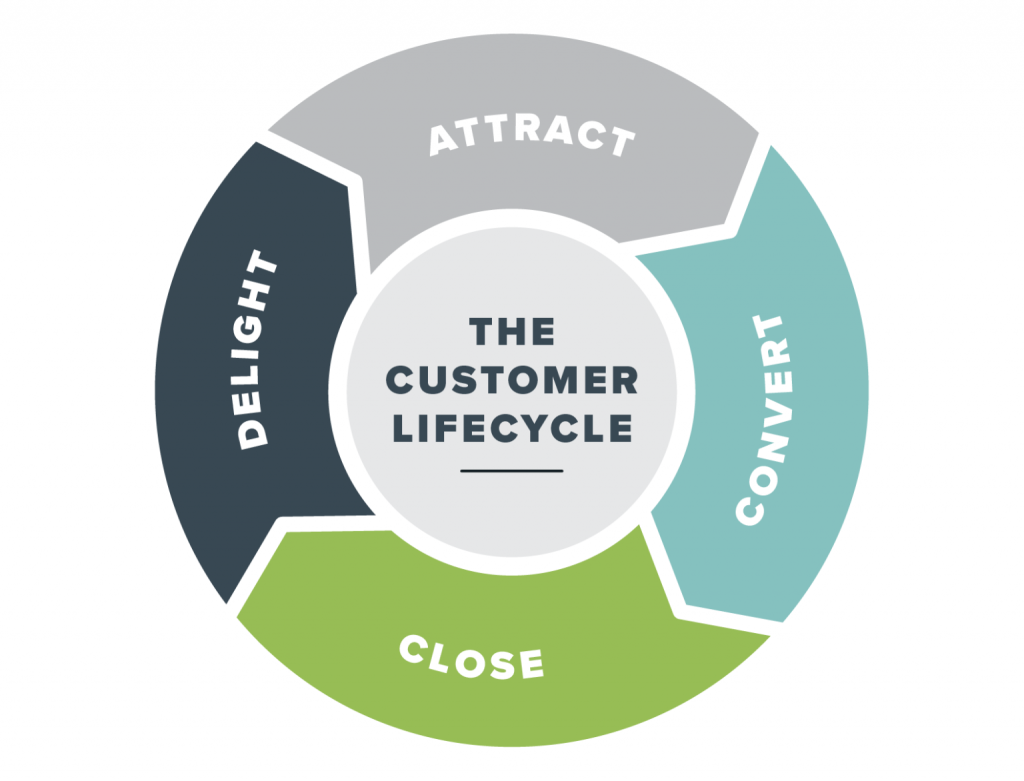
1. Customer Lifecycle
- Attract: Blogs, keyword targeting and social media outreach captures the attention of strangers and gets them interested in learning more.
- Convert: Tools like optimized landing pages, calls to action and contact forms encourage site visitors to take a conversion action such as signing up for a newsletter or contacting a sales representative.
- Close: Utilizing CRM tools, personalized email and deeper levels of interaction, brands help prospects to solve their problems and ultimately become customers.
- Delight: Once leads become customers, marketers continue to engage them with surveys, social media interactions and similar follow-up activities to keep them happy and coming back for more.
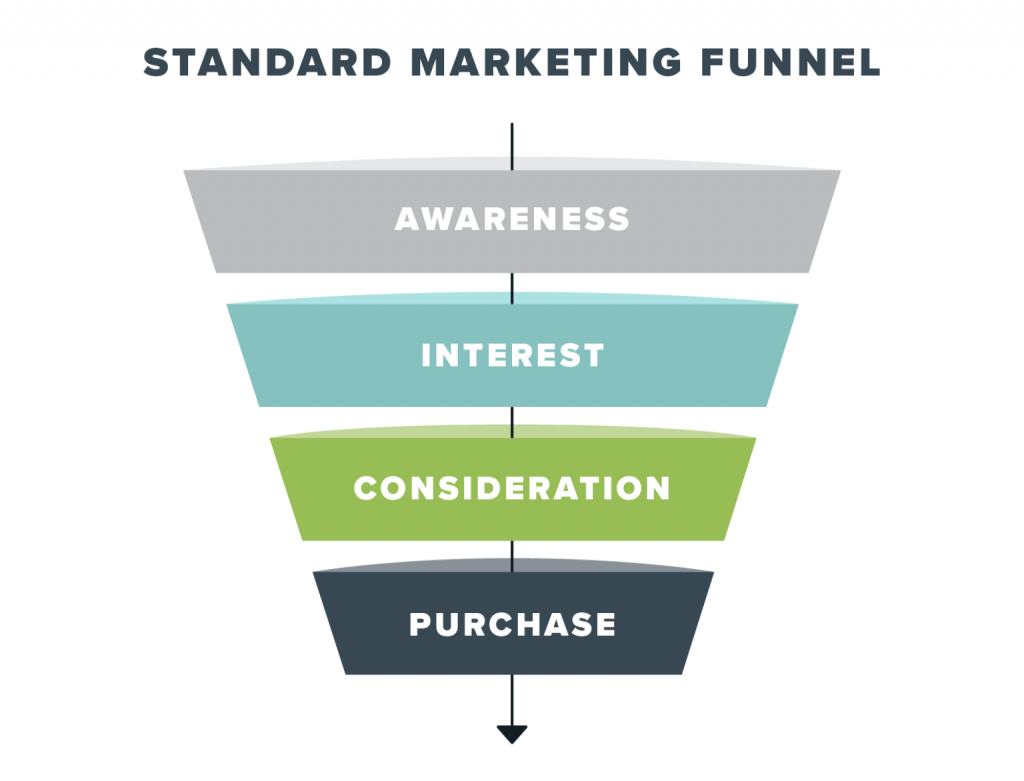
2. Standard Marketing Funnel:
- Awareness: At this early stage of lead generation, research-based marketing campaigns spread brand awareness through social media, blogs, events and traditional advertising.
- Interest: Brands connect with leads who express interest by providing relevant content through targeted emails, webinars and landing pages.
- Consideration: Marketers nurture leads by offering details about products and services, free trials and case studies.
- Purchase: Personalized content, sales demos and phone conversations help to close leads and convert them into customers.
5 Principles of Inbound Marketing
It’s easy to remember the basic principles of inbound marketing, as first described by HubSpot, with SCOPE:
1. Standardize:
Brands should create scalable systems and processes that can be applied to unique marketing situations. Different customers want to hear different information, but the brand story should remain consistent.
2. Conceptualize/Contextualize:
While the brand should have a consistent story to tell, it needs to be organized parallel to the customer journey. Each stage of the marketing funnel should be tailored to the prospect’s needs at that time.
3. Optimize:
Inbound marketing is scientific. Marketers should establish baseline measurements of their campaigns and look for opportunities to improve their strategy as they obtain real customer data.
4. Personalize:
Brands need to build relationships with their customers. Collecting relevant data about prospects can help marketers craft personalized, engaging experiences.
5. Empathize:
Inbound marketing strategies are highly data-driven, but the most effective campaigns keep in mind the human nature of prospects. Having empathy for customer pain points is the key to winning their business.
Deep Dive

The Inbound Methodology: Everything You Need To Know (Infographic)
The inbound marketing methodology is a multi-step strategy for attracting new prospects, leading them to complete a purchase and encouraging them to continue interacting with your business.
Examples of Inbound Marketing
As a concept, inbound marketing includes many unique tactics. Here are two examples that highlight the core principles noted above:
Example 1. eBooks
Consider prospects who have read a few blogs on a brand’s website. They have expressed interest in the brand’s services by browsing the site and viewing various pages. What’s next?
An eBook is a perfect opportunity to position the brand as a true authority in the space. eBooks can go in-depth on subjects and provide immediate value to the reader. Plus, they can be used as gated content with which to obtain the reader’s email address. So, if a visitor is reading a blog, they might click on a CTA at the bottom of the page, enter their email address and download an eBook that gets them one step closer to making a purchase.
Example 2. Infographics
At the top of the marketing funnel, prospective customers tend to seek out basic information about an industry or topic. At this stage, they may not be interested in downloading an eBook or handing over their email address.
Infographics work well at this level of the funnel because they can provide a ton of useful information in a short period of time. Plus, they tend to be highly branded, which helps to make a connection between the value of the information and the brand itself. Plus, infographics are shareable, making them more likely to go viral and rack up valuable backlinks.
Inbound Marketing Tools
One of the great things about inbound marketing is that it is much more cost effective than traditional outbound marketing. Small businesses with simple websites can get a marketing strategy up and running with minimal effort, for example.
Leveraging digital tools like these can maximize the ROI of a strong inbound marketing strategy:

Brafton Content Marketing Platform
Brafton’s content marketing platform operates on 5 core functions, including digital asset management, content calendar, content production planning, resource tracking and marketing campaign measurement. And, it’s built by a world-leading marketing agency with the help of people who live and breathe in this realm.
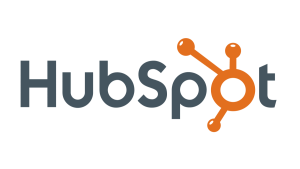
HubSpot
HubSpot offers a number of technologies to help marketers and sales leaders connect with prospects and form lasting relationships with customers. Its 100% free CRM is useful for managing customer interactions and generating reports. Plus, it integrates with G Suite and Microsoft Office.

Optimizely
HubSpot offers a number of technologies to help marketers and sales leaders connect with prospects and form lasting relationships with customers. Its 100% free CRM is useful for managing customer interactions and generating reports. Plus, it integrates with G Suite and Microsoft Office.
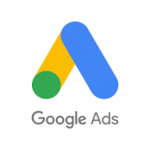
Google Ads
Google’s extensive ad network (formerly known as AdWords) reaches 90% of internet users across the globe. Marketers can quickly create text and visual ads that dynamically format to any device type.
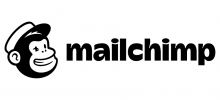
Mailchimp
Mailchimp is an all-in-one marketing platform that helps brands scale their growth through automation and customer personalization. Its automated email marketing tools make it easy to send custom messages that delight customers and keep them engaged.

Buffer
Buffer makes it possible to plan, create and publish social media content for Instagram, Twitter, LinkedIn, Facebook and Pinterest all from one dashboard. Its collaboration features enable remote teams to work together on cohesive campaigns.
There are so many tools out there to help drive results from inbound marketing. Read on for a list of our top recommended 18 inbound marketing tools.
Deep Dive

A Guide to the Best Inbound Marketing Software on the Market
From attracting prospects to transforming them into customers, you need the right tools to get the most from your inbound marketing campaigns.
eBook: Your Complete Guide to Inbound Marketing Best Practices
We’ve compiled 10 expert tactics for inbound success.
Download our eBook to learn:
- Why inbound relies on a continuous stream of fresh, innovative content.
- How automation and analytics lay the foundation for a higher-margin strategy.
- How to coordinate blogs, video and social media for higher organic rankings.
- Why separating site visitor personas from buyer personas achieves targeted results.
- How search engines assess your content.
- Why each asset needs to be absolutely unique.
Your customers are out there waiting. We’ll help you find them.

